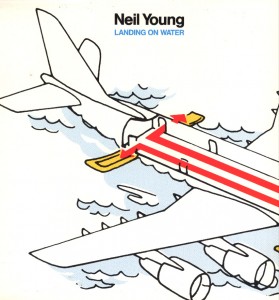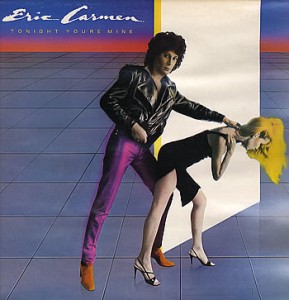Hidden Gems<br> Great Drum Performances Uncovered
The October 2013 issue of Modern Drummer magazine features an article in which seven MD Pro Panelists share some of their favorite “hidden gems.” Here MD’s editorial staff weighs in on their personal favorites.
Associate Editor Michael Parillo
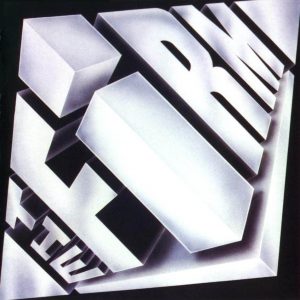 The Firm, The Firm
The Firm, The Firm
My idea of hidden gems is great albums I never hear people talking about. Whenever I gush over the Firm’s self-titled first disc, from 1985, I’m met with a lot of blank stares, a few barbs about the goofy minor hit “Radioactive,” and the occasional “Really”? But I stand by my love for this record, which is packed with good songs—and excellent singing from Paul Rodgers—and explores a different side of Jimmy Page’s guitar playing after Led Zeppelin and John Bonham’s 1980 demise. Page does solo, of course, but mostly he focuses on rhythm guitar and atmospherics. Chris Slade brings energy and ideas, even though questionable ’80s-style production sometimes gives his many toms that “tabletop” tone. Wisely, he’s his own man in a new band, and he doesn’t bother to try sounding like Bonham. Working well with Tony Franklin’s sliding, burping fretless bass, Slade rocks on “Closer,” slithers along on “Make or Break” and the wonderful “Satisfaction Guaranteed,” plays a neat orchestrated beat on the deep “Money Can’t Buy,” and gets to stretch on “Midnight Moonlight,” a Page holdover from the late days of his former band. I’m a little too young to have caught Zeppelin live, but when I saw the Firm on tour behind its second album, Mean Business (which ain’t bad!), and the curtain rose amid dramatic orchestral music to reveal the tall, cool guitar wizard illuminated by laser light, it was one of the best moments of my musical life.
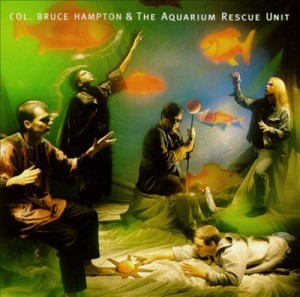 Col. Bruce Hampton & the Aquarium Rescue Unit, Col. Bruce Hampton & the Aquarium Rescue Unit
Col. Bruce Hampton & the Aquarium Rescue Unit, Col. Bruce Hampton & the Aquarium Rescue Unit
Okay, maybe I exaggerated a little about my idea of hidden gems, because my musician friends and I still talk about this 1991-released live album all the time. Still, it needs more love. It’s go-for-the-throat rock and fusion made nice and weird by Bruce Hampton’s onstage antics and wild vocals, and it’s a perfect example of frenetic tempos (“Time Is Free,” “Compared to What,” “Davy Crockett”) handled with grace and delivered with groove, thanks in a big way to Jeff Sipe’s drumming, which drives the supertalented band without ever veering off course. Guitarist Jimmy Herring is a total beast, and mandolinist Matt Mundy, who would soon depart, along with Hampton, underscores the band’s Southern roots. Sipe, also known as Apt. Q-258, has tasty, meticulous drum sounds and is a real jammer—check out the way he follows Oteil Burbridge’s astonishing bass/scat solo on the swinger “Basically Frightened.” Frightening! Advertisement
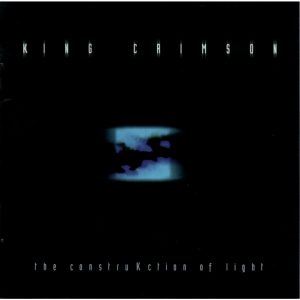 King Crimson, The ConstruKction of Light
King Crimson, The ConstruKction of Light
This one, from 2000, gets lost in the Crimson shuffle, but it has many noteworthy aspects, even if not all of them are necessarily positive. It’s KC’s return to a quartet format after a couple years as a “double trio,” and it’s the group’s first album without drummer Bill Bruford since the early ’70s (and first without bassist Tony Levin since the early ’80s, with the low end covered by Trey Gunn). And then there’s the fact that Pat Mastelotto, Bruford’s partner in the double trio and here the only timekeeper, plays V-Drums exclusively, including snare and cymbals. Although I can’t help but wonder how acoustic sounds would have affected the music, I think Mastelotto does a killer job of dealing with what legend has it was leader Robert Fripp’s request—some would say demand—for electronics. I love this album mainly because I think some of the songs are among Crimson’s best in years, with several making inspired use of the gamelan-influenced interlocking guitar parts that Fripp and Adrian Belew began exploring decades earlier. The title track and “Frakctured” are classic Crimson epics, and “Into the Frying Pan” finds Belew’s guitar and voice intertwining in satisfying microtonal strangeness, while Mastelotto funks it up on the V-Drums.
 Tenacious D, Tenacious D
Tenacious D, Tenacious D
If you’re an acoustic “folk metal” duo and you feel like having some amped-up full-band stuff on your first album, you might as well get Dave Grohl to play drums. With Tenacious D, Jack Black and Kyle Gass simultaneously kneel at the altar of rock and throw a stone through its stained-glass window, and Grohl’s drumming acts like the sturdy counterbalance to the pair’s zaniness. Grohl plays it straight (no comedy drumming here) but adds great little details to make his parts pop—things like the hi-hat openings on “Wonderboy” and the tom rhythms on “Kyle Quit the Band.” I especially dig the bunch of hard-rocking, less-than-two-minute tracks, including “Explosivo,” “Dio,” and “Lee.” Here, Grohl does a lot with a little, making big statements in almost no time at all. It should also be noted that Dave plays the devil in the video for the D’s “Tribute,” another great song from this 2001 album.
Managing Editor Michael Dawson
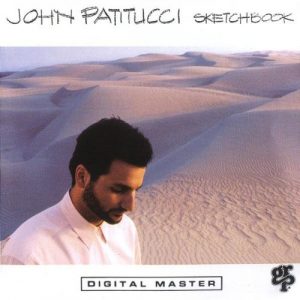 John Patitucci, Sketchbook
John Patitucci, Sketchbook
This album was my introduction to the over-the-top fusion drumming of Vinnie Colaiuta, who appears on four of the ten cuts here. I remember how shocking it was to hear those spacious and unpredictable opening fills in “Spaceships.” I must have restarted the track twenty-five times before I gave up trying to figure them out. Vinnie also really lets loose on “Scophile,” and then on “They Heard It Twice” he shows how even a pretty ballad can handle a bit of recklessness. Advertisement
Neil Young, Landing on Water
This may be Young’s most widely misunderstood album, mainly because of the extensive use of cold-sounding synthesizers and electronic drums. But Steve Jordan is ultra-creative throughout, from riding on toms and Octobans instead of the hi-hat to constructing funky, asymmetrical grooves using acoustic kick and snare and electronic pads. I don’t listen to this record often, but when I do, I’m always inspired to try something different.
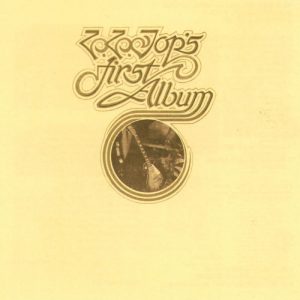 ZZ Top, First Album
ZZ Top, First Album
I grew up listening to ’80s-era ZZ Top on the radio, but I never investigated the band’s earlier work until finding this brilliantly raw collection of Southern blues rock at a local record shop. If you need a lesson in super-deliberate drumming with edginess and swagger, Frank Beard delivers, especially on the opening cut, “(Somebody Else Been) Shaking Your Tree.”
Editorial Director Adam Budofsky
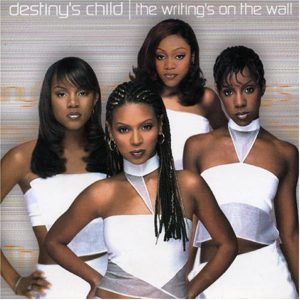 Destiny’s Child, The Writing’s on the Wall
Destiny’s Child, The Writing’s on the Wall
The second album by the blockbuster vocal group, released in 1999, featured its share of ballads, most of which, honestly, I usually skip over—except for the remarkable Grammy-winning “Say My Name,” produced by Rodney Jerkins, whose application of a syncopated double-time shift in the chorus is brilliant. But it’s the dance-floor hits produced by Kevin “She’kspere” Briggs that make this one of my favorite “drum” albums. Of course, most of the tracks are heavily programmed, but Briggs’ approach is unusual, clever, and great fun to emulate at the kit. For instance, on “Bug-a-Boo” try playing the 16th-note hi-hat part against the rimclick backbeat and offbeat bass drum pattern in the original hip-hop style, then imagine how a completely different band, like, say, the Offspring, or Periphery, might approach it. The super-busy bass drum on “Hey Ladies” is equally fun to mess with, and “Bills, Bills, Bills” is a hoot to blow double bass all over. Advertisement
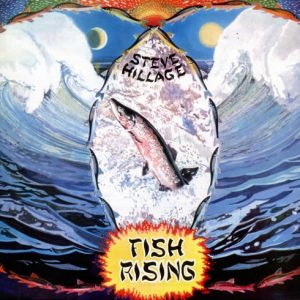 Steve Hillage, Fish Rising
Steve Hillage, Fish Rising
Hillage was the lead guitar player in classic lineup of the multinational progressive band Gong, and this, his 1975 solo debut, is a mind-bending combination of space rock, fusion, and prog. Recorded while Hillage was still in Gong, Fish Rising features many of the mother band’s members, including drummer Pierre Moerlen, who led his own version of Gong for years following the departure of founder Daevid Allen. Moerlen also recorded and toured with Mike Oldfield (“Tubular Bells”) for more than a decade. An underappreciated drummer, Pierre was like a dream combination of Bill Bruford and Phil Collins, navigating tricky unison figures with precision while incorporating his own highly appealing approach to offbeat accents, always with an inviting, easy sense of swing. For more superb Moerlen—and once you hear Fish Rising, you’ll want to hear more—check out the second and third albums in Gong’s famed ’70s trilogy, Angel’s Egg and You, as well as the late-’70s LPs that the drummer led, such as Gazeuse!, Expresso II (both of which feature guitarist Allan Holdsworth), and the Nick Mason–produced Shamal.
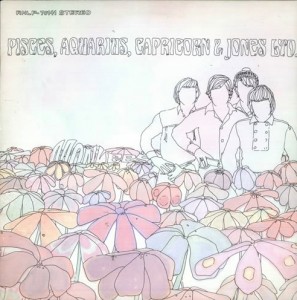 The Monkees, Pisces, Aquarius, Capricorn & Jones Ltd.
The Monkees, Pisces, Aquarius, Capricorn & Jones Ltd.
Yeah, the Monkees—wanna make something of it? Oh, I’m sorry—but us Monkees fans have always had to play defense. For decades, the band’s genesis as a contrived-for-TV ensemble has overshadowed the members’ individual and collective talents. Truth is, the Monkees employed the very best writers, producers, and studio musicians of the time (the late ’60s) and made dozens of tracks that stand the test of time. This 1967 album, their fourth overall, and third number-one released that year, contains some of their best material, including “Words,” “Pleasant Valley Sunday,” “The Door Into Summer,” and “What Am I Doing Hangin’ ’Round”? The group’s follow-up to Headquarters, on which the members insisted on playing the instruments themselves, Pisces… is the work of a more cohesive band, although one augmented by top session musicians. Micky Dolenz drums on the Harry Nilsson song “Cuddly Toy” (neatly varying Nilsson’s original version by playing it straight, not swung, in the B sections), but the majority of the playing is by Eddie Hoh (Donovan, Mamas and Papas, Tim Buckley). Hoh is the epitome of playful professionalism throughout, particularly on the friskier tunes, like the 7/4 “Love Is Only Sleeping,” the “1”-challenging “Pleasant Valley Sunday,” and the jazz-rock-Vegas raver “Goin’ Down.”
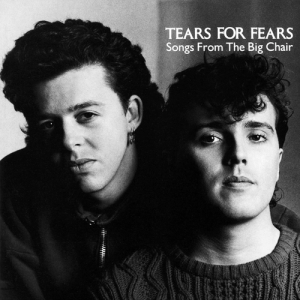 Tears for Fears, Songs From the Big Chair
Tears for Fears, Songs From the Big Chair
This is an iconic new-wave album. For me it’s also an iconic drumming album. I remember feeling really excited when it came out, being a huge fan of Tears for Fears’ debut, The Hurting. Songs From the Big Chair seemed like a revelation; the group’s sound had expanded in multiple ways, not least of which was that the drums, whether programmed by producer Chris Hughes or played by bandmember Manny Elias, were imbued with more power. The production approach, the elevation in songwriting, and the fresh arrangements resulted in three major hits—the wall-of-programmed-sound blast “Shout”; the phased-up “Head Over Heels” and its exciting coda, “Broken”; and “Everybody Wants to Rule the World,” on which Elias plays a righteously feel-good shuffle and smacks mad offbeats. Another highlight is “I Believe,” which is dedicated to solo artist and Soft Machine drummer Robert Wyatt. The entire arrangement really captures a classic Wyatt vibe, and Elias’s spare control is a tribute to the song’s inspiration. Advertisement
Associate Editor Billy Amendola
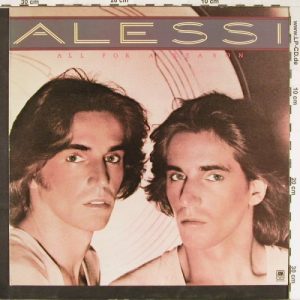 Alessi Brothers, All for a Reason
Alessi Brothers, All for a Reason
For my selection of hidden gems, I chose particular album tracks, as well as a couple full albums. First up is Steve Gadd on “Air Cushion” from the Alessi Brothers’ All For a Reason, released on A&M Records in 1977. On this track you immediately identify that smooth Gadd sound. Steve goes on to cop his own feel from the 1975 hit song “50 Ways to Leave Your Lover” by Paul Simon, from the album Still Crazy After All These Years. For a snippet of this remarkable groove, click here.
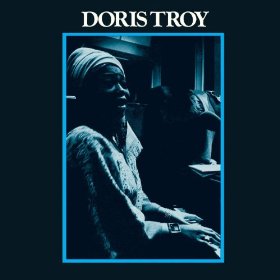 Doris Troy, Doris Troy
Doris Troy, Doris Troy
Ringo Starr plays drums on this Apple Records release, and even cowrote two of the tunes, with Troy, George Harrison, and Stephen Stills. First released in 1970, the record features an all-star lineup of Starr, Stills, Harrison, Billy Preston, Eric Clapton, Peter Frampton, Leon Russell, and Klaus Voormann. In 2010 it was remixed and remastered for the Apple catalog box set. On every track, it’s Ringo like you’ve never heard him before. Preview it on iTunes here.
 Fotomaker, Fotomaker, Vis-à-Vis, Transfer Station
Fotomaker, Fotomaker, Vis-à-Vis, Transfer Station
Rascals drummer Dino Danelli played on all three of the power-pop supergroup Fotomaker’s late-’70s Atlantic albums. Fotomaker also featured Dino’s Rascals bandmate Gene Cornish and the Raspberries’ Wally Bryson, plus ringers Lex Marchesi and Frankie Vinci. Danelli displays what a truly great drummer he is by coming up with the absolute perfect parts for the songs. He really shows his studio abilities here, proving that he could have gone on to be a top session drummer. Preview the group’s best-of collection here. Advertisement
Chris Mancini, No Strings
Eric Carmen, Tonight You’re Mine
Finally, check out Carmine Appice on Chris Mancini’s “City Girl,” from his 1983 album No Strings—a bit of a pun on his composer/conductor dad, Henry Mancini. On this catchy pop tune, Carmine plays a bit lighter than fans of his work with Vanilla Fudge or Beck Bogert Appice might expect. You can hear the song here. And for another example of Appice playing the role of pop studio ace, track down Raspberries lead singer Eric Carmen’s 1980 solo album, Tonight You’re Mine. You can preview Carmine’s performance on the title track here.


